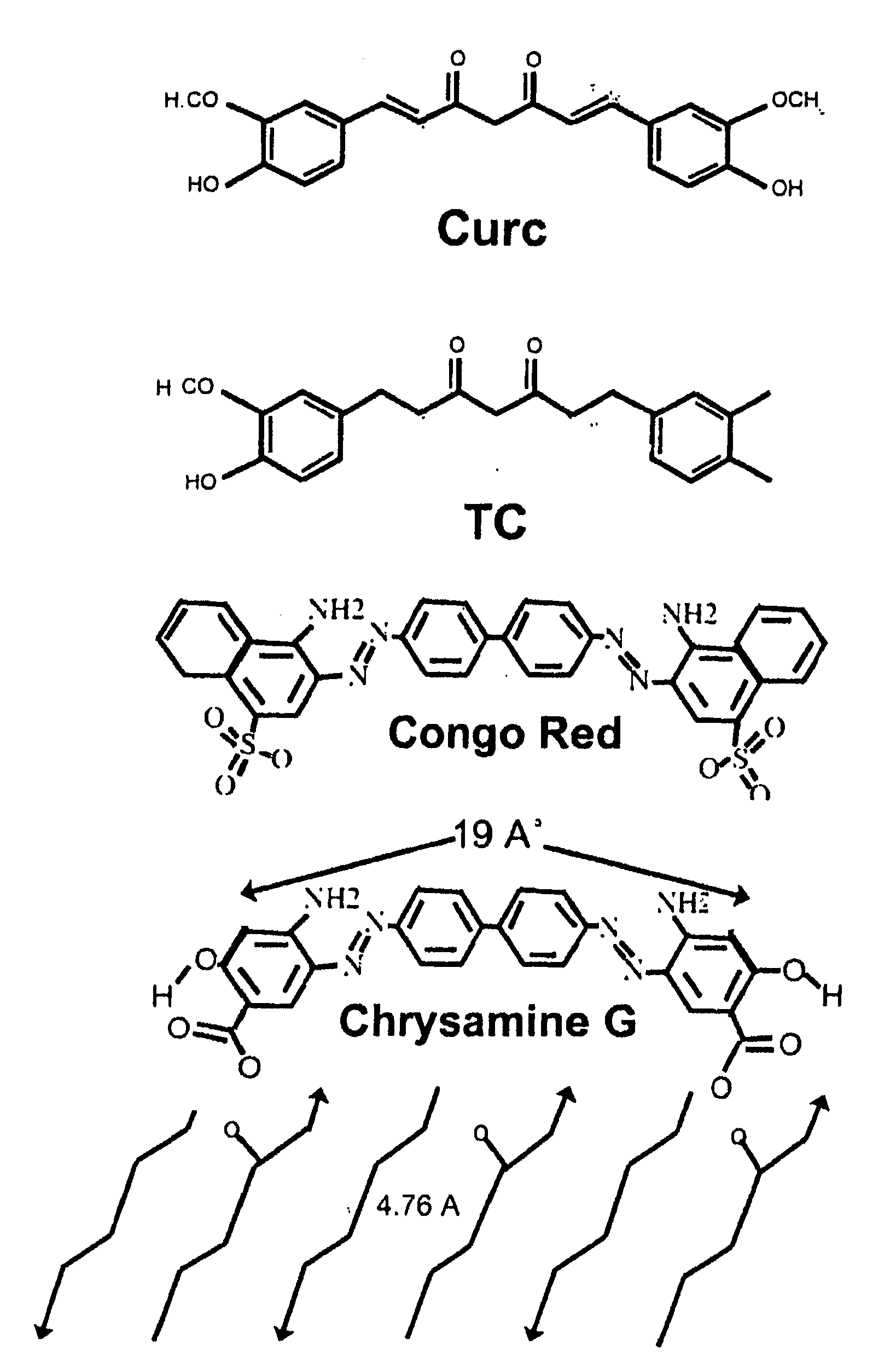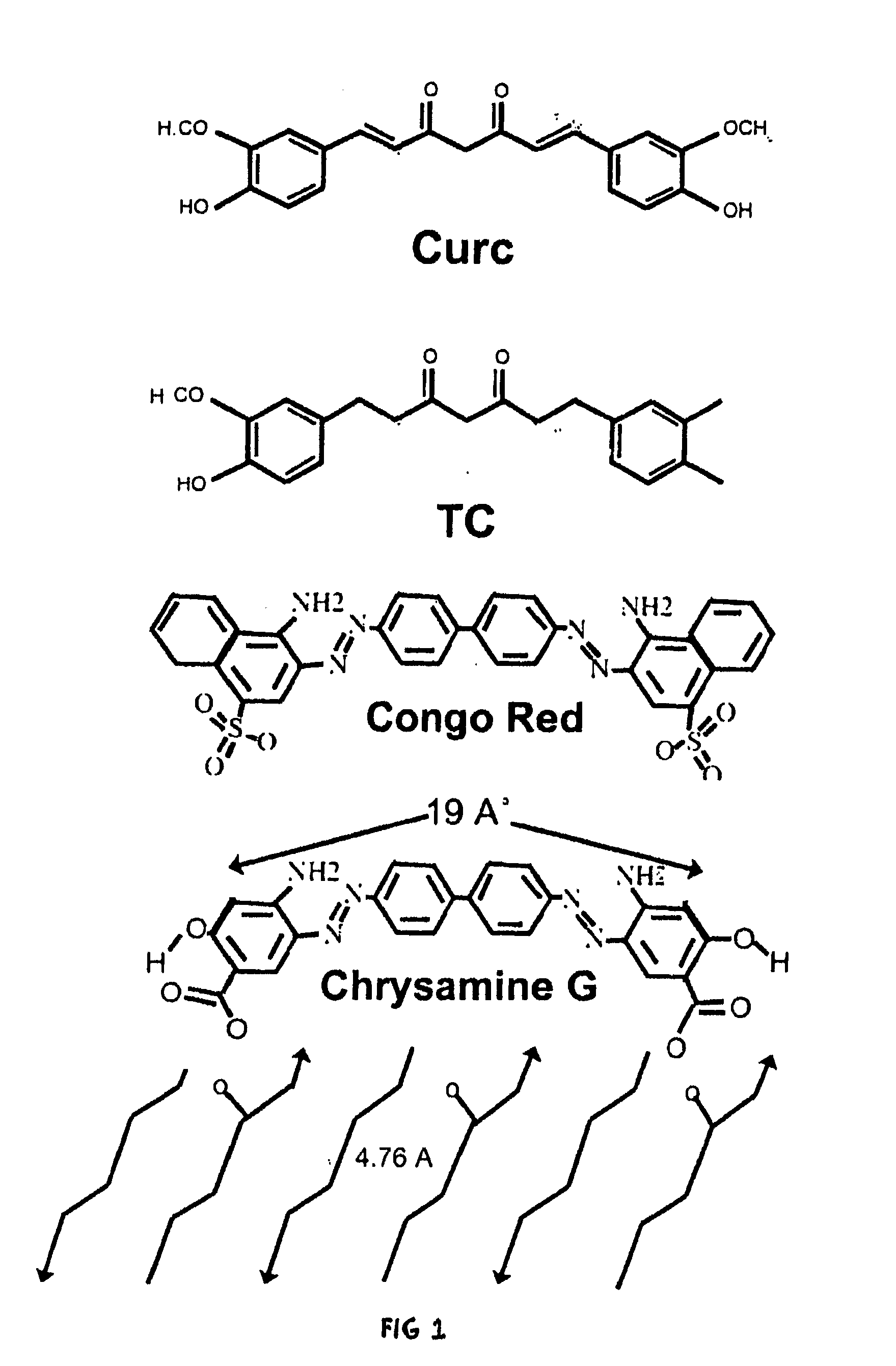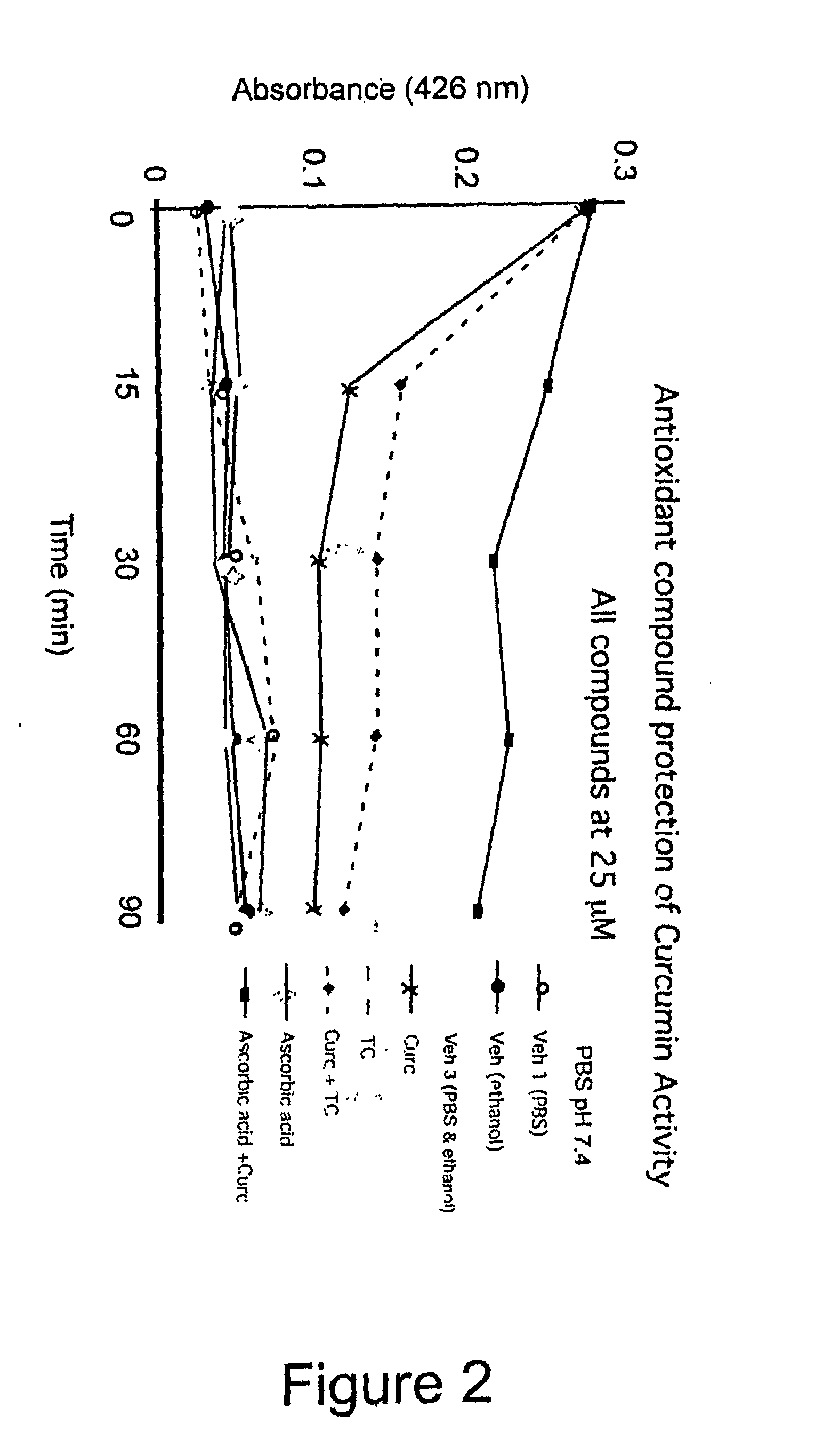Bioavailable curcuminoid formulations for treating alzheimer's disease and other age-related disorders
a technology of curcuminoid and alzheimer's disease, applied in the field of curcuminoid compositions, can solve the problems of reducing the clinical efficacy of antioxidant and nsaid approaches to these age-related diseases, reducing the clinical efficacy of antioxidant and nsaid approaches, and reducing the clinical efficacy of cox inhibitors, etc., to achieve enhanced bioavailability and enhanced bioavailability
- Summary
- Abstract
- Description
- Claims
- Application Information
AI Technical Summary
Benefits of technology
Problems solved by technology
Method used
Image
Examples
example 1
DOC / PC / Curcumin Micelles And Gavage Administration To Mice
[0063]To make 5 mg of curcumin micelles having a DOC:PC molar ratio of 3.7:1 and a molar ratio of PC to curcumin of 1:3.33, to orally dose 5 mice at 1 mg per ˜30 gm mouse, we mix 12.438 mg DOC to 6.219 mg PC (mass ratio 2:1) and 10 mg curcumin powder. This was dissolved by vortexing in 2 ml of chloroform / methanol (2:1) mixture. The solvent was evaporated and dried under nitrogen. The resulting emulsion film was scraped into 2 ml of phosphate buffered saline (PBS), pH 7.4, and sonicated in a bath sonicator for 5 minutes, and 1 mg (200 μL) was administered by gavage per mouse to produce a plasma concentration of 0.465 micromolar, which was more than double the plasma level without micelles The dry mass of the preparation was 2.865 mg / mg curcumin or curcuminoids which would permit ˜350 mg of curcumin per 1 gm capsule or 175 mg / 500 mg capsule, practical amounts.
example 2
DHA-Curcuminoid Ester
[0064]A curcuminoid ester can be synthesized from curcumin and DHA by coupling DHA to curcumin at a phenolic hydroxyl with 1:1 stoichiometry, analogous to Bradley et al 2001 for pacliataxel. To a solution of curcumin (366 mg; 1 mol) in methylene chloride (61 ml) under argon, one adds 4-dimethylaminopyridine (122 mg; 1 mol), 1,3-dicyclohexylcarbodiimide (412.36 mg; 2 mol), and DHA (329.4 mg; 1 mol). The reaction mixture is stirred at room temperature for 2 h. After dilution with diethyl ether, the reaction mixture is washed with 5% HCl, water, and saturated aqueous NaCl. The mixture is dried with sodium sulfate and concentrated and chromatographically purified. DHA-curcumin is then used as curcumin would be, e.g., in mixed micelle or gel formulations. (See Bradley M O, Webb N L, Anthony F H, Devanesan P, Witman P A, Hemamalini S, Chander M C, Baker S D, He L, Horwitz S B, Swindell C S. Tumor targeting by covalent conjugation of a natural fatty acid to paclitaxel....
example 3
Antioxidant Data
[0065]To test the effect of an antioxidant on curcumin stability, various 25 micromolar curcumin solutions were prepared, with or without an antioxidant (ascorbic acid or etrahydrocurcumin. Using absorbance spectroscopy, the intensity of curcumin's absorbance at 426 nm was measured. The results are presented in FIG. 2. “PBS” stands for phosphate buffered saline (pH 7.4); “Curc” denotes curcumin; “TC” denotes tetrahydrocurcumin; “Veh” denotes vehicle. The data shows that ascorbic acid is very effective at substantially retarding curcumin hydrolysis. Additional antioxidant data is presented in FIGS. 3 and 4, which show microplate reader absorbance data at 450 and 405 nm, respectively (flanking curcumin's absorbance peak at 426 nm). The data shows that ascorbic acid is very effective at retarding hydrolysis of curcumin, at a curcumin-to-ascorbic acid ratio of 1:1 or even 2:1, with somewhat diminished effectiveness at higher ratios.
[0066]The Appendix provides additional ...
PUM
| Property | Measurement | Unit |
|---|---|---|
| pH | aaaaa | aaaaa |
| pH | aaaaa | aaaaa |
| pH | aaaaa | aaaaa |
Abstract
Description
Claims
Application Information
 Login to View More
Login to View More - R&D
- Intellectual Property
- Life Sciences
- Materials
- Tech Scout
- Unparalleled Data Quality
- Higher Quality Content
- 60% Fewer Hallucinations
Browse by: Latest US Patents, China's latest patents, Technical Efficacy Thesaurus, Application Domain, Technology Topic, Popular Technical Reports.
© 2025 PatSnap. All rights reserved.Legal|Privacy policy|Modern Slavery Act Transparency Statement|Sitemap|About US| Contact US: help@patsnap.com



